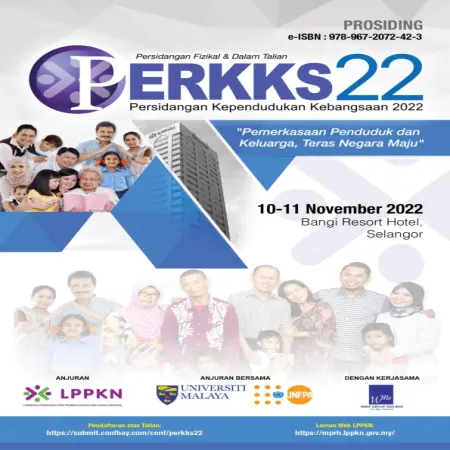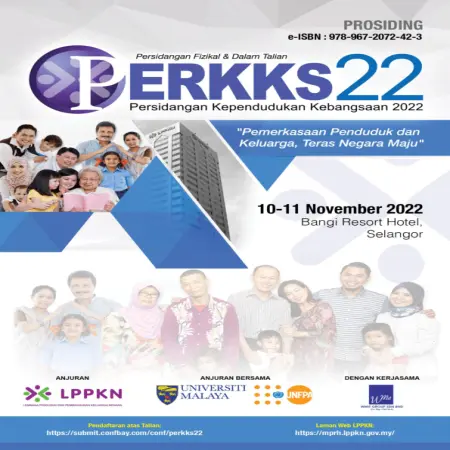Browse by Author
Results for Family Name : "Awang" AND Given Name/Initial : "Halimah"
|
|
Grandparenting in Malaysia: evidence from household surveys
Item Type: Book Section
Editor:
Year: 00/00/2022
Abstract: The lack of childcare facility and support has resulted in fertility decline and low female labour force participation rate in Malaysia, as some women forgo childbearing to focus on career development, while others stop working to look after their children. Grandparents can play a crucial role in childcare, to allow women to combine their maternal role with work. This paper analyses grandparents’ roles in childcare by socio-demographic characteristics.
|
|
|
|
|
|
Examining the wellbeing of families during the acute phase of covid-19
Item Type: Book Section
Editor:
Year: 00/00/2022
Abstract: The COVID-19 pandemic and the subsequent movement restriction order (MCO) imposed an acute threat to the well-being of families caused by the threats linked to the social disruption including financial insecurity, caregiving burden, and confinement-related stress (e.g., crowding, changes to the arrangement, and routine). Also, many people have needed help even if they were not infected. This paper investigates the wellbeing of families in Malaysia during the pandemic.
|
|
|
|
|
|
Differentials in sexual and reproductive health knowledge among East Malaysian adolescents
Item Type: Article
Editor:
Year: 00/00/2019
Abstract: The aim of this study was to assess the knowledge of East Malaysian adolescents on sexual and reproductive health issues. Data were collected in March–July 2015 from 2858 adolescents aged 13–18 years from selected East Malaysian secondary schools using a self-administered questionnaire. Twelve items relating to sexual and reproductive health were used to measure respondents’ knowledge based on their responses ‘True’, ‘False’ or ‘Don’t know’, with the proportion of correct answers being the variable of interest. Cronbach’s alpha for the twelve items was 0.761 and the mean knowledge score was 6.8. While the majority of the respondents knew that a woman can get pregnant if she has sex with a man and that HIV and AIDS can be transmitted through sexual intercourse, knowledge about Malaysia’s abortion laws, that a woman can get pregnant if she has sex only once and that people with sexually transmitted infections may look healthy was poor. Older respondents and those from urban schools reported significantly higher knowledge than younger respondents and those from rural schools, respectively. More emphasis should be given in schools to the specific topics for which low levels of sexual and reproductive health knowledge were found, with greater attention being given to younger adolescents and those in rural areas.
|
|
|
|
|
|
Population ageing and social protection in Malaysia
Item Type: Conference or Workshop Item
Editor:
Year: 00/00/2012
Abstract: With rapid increase in number of older persons, Malaysia is faced with multitude issues of graying population resulting from declining birth rate and rising life expectancy. In 2010 4.7% of the population was above 65 years old and the life expectancy was 71.7 years for males and 75 years for females. The New Economic Model for Malaysia (NEM) 2010 defines inclusiveness, high income and sustainability, as the three prong objective towards a developed nation in 2020. The underlying principle of the inclusiveness objective is to enable every Malaysian to have access to opportunities in order to contribute to the economy and to ensure that essential needs of the people are met. At least ten policy measures were recommended to improve the well being of the bottom 40% of the population, which has been identified as underserved. The question is, to what extent is the existing social safety net policy adequate to support every Malaysian to sustain a decent living? What are the issues and gaps with social safety net for older people? This paper attempts to answer these questions and to examine other related issues. It is divided into three parts: the first parts is an assessment of the existing social safety net in Malaysia; the second part looks at some case studies of NGO’s working with the older people and the final part offers some policy recommendations as a way forward.
|
|
|
|







